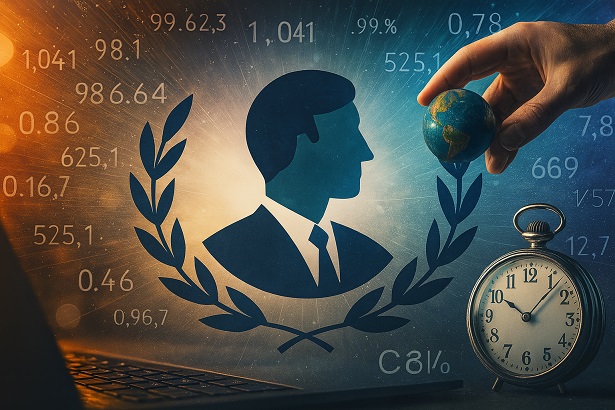The fear that Artificial Intelligence (AI) will "steal jobs" is widespread. From factory workers to software developers, many professionals wonder if automation and machine learning might replace human effort. However, history and present-day examples show us a different reality: every major technological advancement has created more opportunities than it has taken away. AI is no different.
Quick Navigation
1. Technology Creates Access, Not Scarcity
Take the example of YouTube. Twenty years ago, very few people could imagine becoming global content creators. Filming, editing, and publishing were costly and required professional studios. Even if someone had creative talent, they rarely had the tools.
Before YouTube & Smartphones
- Expensive filming equipment required
- Professional editing suites needed
- Limited distribution channels
- High barriers to entry
After YouTube & Smartphones
- Anyone with a smartphone can create
- Free editing apps available
- Global distribution platform
- Low barriers to entry
New Jobs Created
Today, with smartphones, free editing apps, and AI-powered content assistants, millions of creators can share their voices. This new ecosystem has created jobs not just for creators but also for:
Content & Production
- Video editors
- Thumbnail designers
- Scriptwriters
- Audio engineers
Business & Marketing
- Influencer managers
- Social media marketers
- Brand partnerships specialists
- Content strategists
Platform & Tech
- YouTube algorithm specialists
- Analytics consultants
- Content moderators
- Platform developers
The Lesson
AI and new technologies break barriers, democratize opportunities, and invite more people into industries once limited to a few.
2. Sports: From Test Matches to Global Leagues
Cricket is a strong physical example. For decades, the sport had limited formats—mostly Test matches and One Day Internationals. The audience, players, and commercial opportunities were limited.
Traditional Era
Test & ODI formats only
T20 Revolution
Shorter, faster format
T10 & Leagues
Global franchise model
Ecosystem Expansion
Once shorter formats like T20 and T10 were introduced, the game exploded into multiple new industries and professions:
Sports Professionals
- More players across formats
- Specialist coaches
- Analysts and strategists
- Physiotherapists
Media & Broadcasting
- Commentators and presenters
- Production crews
- Digital content teams
- Streaming specialists
Business & Operations
- League administrators
- Event managers
- Sponsorship managers
- Merchandising experts
Technology
- Data analysts
- App developers
- Broadcast engineers
- VR/AR specialists
The Pattern
Innovation didn't reduce opportunities—it multiplied them. AI is doing the same across industries today.
3. Healthcare: AI as Medical Assistant, Not Replacement
AI is not replacing doctors or nurses. Instead, it is assisting them with diagnostics, predictive analytics, and administrative tasks.
Traditional Healthcare
- Manual diagnosis
- Paper-based records
- Limited patient monitoring
- Generic treatment plans
AI-Enhanced Healthcare
- AI-assisted diagnosis
- Digital health records
- Continuous monitoring
- Personalized treatments
New Healthcare Roles Created
AI Medical Technicians
Specialists who operate and maintain AI diagnostic systems
Health Data Analysts
Professionals who interpret health data for better outcomes
Digital Health Consultants
Experts in implementing digital health solutions
Health AI Ethicists
Professionals ensuring ethical AI use in healthcare
4. Education: AI as Teaching Amplifier
AI-powered learning tools don't eliminate teachers. They extend their reach and effectiveness.
Traditional Teaching
AI-Enhanced Teaching
New Education Roles
EdTech Developers
Create AI-powered learning platforms and tools
Learning Experience Designers
Design engaging AI-enhanced curriculum
AI Tutoring Specialists
Manage and optimize AI tutoring systems
Digital Pedagogy Experts
Research and implement effective digital teaching methods
5. The Path Forward: Adaptation and Growth
Instead of fearing AI, professionals should focus on adaptation. Skills that blend human creativity, judgment, and empathy with AI's power will be in the highest demand.
Practical Adaptation Strategies
Upskilling
Learn AI tools relevant to your industry through online courses and certifications
Focus on Human Skills
Develop creativity, strategy, and emotional intelligence—areas AI cannot replace
Entrepreneurship
Explore business opportunities AI makes possible, just like YouTube did for creators
Collaboration
Learn to work alongside AI systems as collaborative partners
The Future Outlook
Conclusion: AI as Opportunity Multiplier
AI is not a job destroyer—it is a job multiplier. Just as smartphones turned millions into creators and T20 cricket turned thousands into professionals, AI will expand opportunities in every sector.


